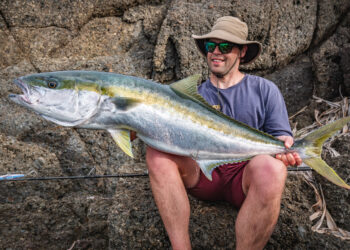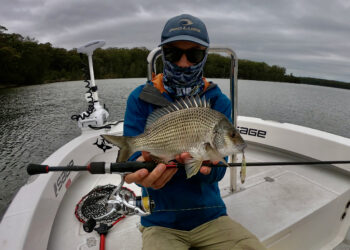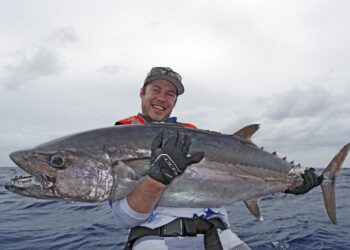IN our previous fish tagging article, Tagging fish – what is it and how it works, we covered the basics of tagging fish and the NSW DPI Game Fish Tagging Program. This time we’ll go into detail on the process of tagging fish and why its so important to do it correctly. For tagging to be effective, the fish must be tagged in the correct location and with the correct tag. There are three main tag types – a billfish tag, a shark tag and a general pelagic species tag. The use of the wrong tag and incorrect tagging techniques can lead to tag loss (“shedding” – a similar process to human tissue rejecting a splinter) and can potentially harm the fish. The following info will maximise the success and effectiveness of your fish tagging!
How to tag most small to medium size fish
When captured, most smaller fish (<1m) such as tuna, mackerel, kingfish, dolphinfish and mulloway can be removed from the water to ensure accurate and effective tagging. When removing fish from the water it’s often helpful to use a knotless landing net to help secure the fish.

Tips to help with your tagging
Place the fish on a wet towel/wet foam (or similar) to minimise damage. Avoid placing fish on hard, hot or dry surfaces as this can lead to skin and scale damage. Use long-nose pliers to remove the hook or lure from the fish. Once the fish is calm (a wet towel over the eyes often helps), you can apply the tag. Insert the tag directly below the dorsal fin (or second dorsal fin for tuna species). The single barb style tags used for these species are designed to lock into the small bony structure that supports the dorsal fin. These dorsal spines are known in scientific terms as “pterygiophores”. Ensure that the tag goes in on a 45-degree angle. This makes the tag streamlined and reduces water friction. Tagging in this location is absolutely critical, if the tag only goes into the muscle tissue, it is likely that the tag will be shed by the fish. Once the tag is inserted, give it a gentle pull to make sure it’s secure. Measure your fish. To obtain an accurate measurement, place the fish on a good quality “brag mat”. Make sure you wet the mat before use. Measure and record the length of the fish; record both the fork length and the total length if you get a chance. Return the fish to the water and spend time reviving it. This can be done by firmly holding the fish and facing it into the current so it obtains a good flow of water over its gills. Fill in the tag card details immediately and return it to DPI as soon as possible. A good tip is to take a quick photo of the tag card so that you have the information if the card gets lost.

How to tag larger game fish
Larger game fish such as billfish, sharks and big tuna should be traced and led alongside the boat to present a broad tagging target. Keep the boat in gear moving slowly forwards. This tends to settle the fish and enables better control. Once the fish is in position for tagging, the person handling the tag pole should take position behind the person tracing the fish to allow for a clear tag shot. Any attempt to apply the tag should be places towards the middle of the fish, well above the lateral line and towards the dorsal fin. Billfish and shark tags are designed to simply be placed into the muscle of the fish. Billfish should be tagged with a firm, well-aimed stroke — simply place the tag against the fish’s flank and push. Sharks require a firmer “jab” to get the applicator through their tough skin. Once the tag has been placed, remove the hook (if possible). If not, cut the trace as close to the mouth as possible. Revive any fish that appears to be exhausted. For billfish, this can be done by holding the bill firmly while moving forwards at 2 to 3 knots. Ensure the bill is submerged to ensure good flow of water over the fish’s gills. The fish should only be released once it shows signs of recovery, for example improved skin colour. If the fish is exhausted, recovery can take up to 10 minutes or more. Fill in the tag card immediately and return it to DPI as soon as possible. Again, take a quick photo of the tag card just in case it gets lost.

How do I get involved?
If you’re a member of the Game Fishing Association of Australia (GFAA) or Australian National Sportfishing Association (ANSA) affiliated fishing club, you can source tags directly from your club. If you aren’t a member of a fishing club and would like to get involved with DPI’s Game Fish Tagging Program, contact us on 02 6691 9602 or at gamefish.tagging@dpi.nsw.gov.au.
















